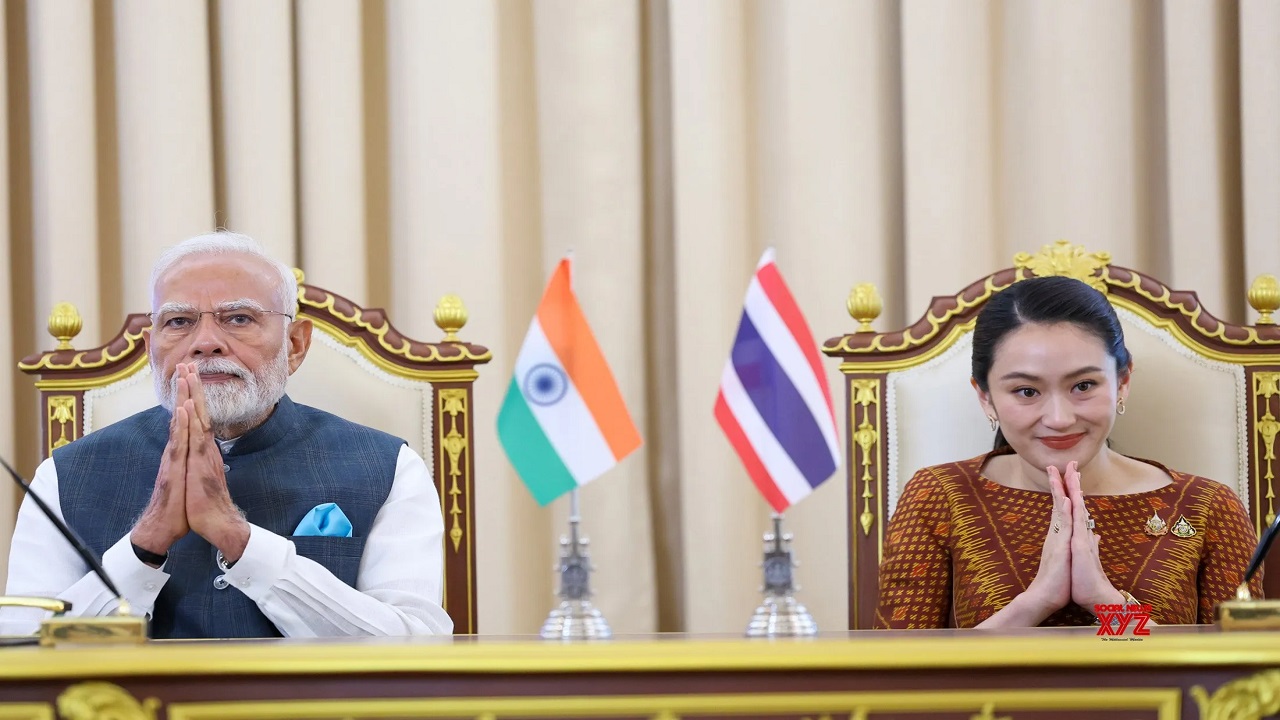India–Thailand Relations: Strategic Partnership
Context:
-
In recent years, India has focused on enhancing its ties with Southeast Asian nations under the ‘Act East Policy’, while Thailand has deepened its ‘Act West Policy’ — creating a natural strategic alignment between the two.
-
In this backdrop, the India–Thailand relationship was recently elevated to the Strategic Partnership level, marking a significant expansion in bilateral cooperation across sectors.
Pillars of India–Thailand Relations
-
Diplomatic Relations:
-
Formal diplomatic ties were established in 1947.
-
In 2022, both nations celebrated 75 years of diplomatic relations.
-
-
Institutional Dialogue Mechanisms:
-
Structured dialogues include:
-
Joint Working Groups on Security Cooperation, Education, Visa and Consular Matters.
-
Joint Task Force on Maritime Cooperation.
-
-
These platforms enable regular discussions on bilateral and global developments.
-
-
Regional and Sub-regional Cooperation:
-
India and Thailand collaborate through multiple forums:
-
ASEAN, East Asia Summit (EAS), BIMSTEC, MGC, ACD, IORA, ACMECS.
-
-
-
Policy Synergy:
-
Thailand’s ‘Act West’ Policy complements India’s ‘Act East Policy’, enhancing strategic convergence.
-
-
Trade and Economic Partnership:
-
Thailand ranks as India’s 4th largest trading partner within ASEAN.
-
Bilateral trade reached USD 14.94 billion in FY 2023–24.
-
-
Defence Cooperation:
-
A dedicated MoU on Defence Cooperation was signed on 25 January 2012.
-
Focus areas include joint exercises, training, and maritime collaboration.
-
-
Cultural Cooperation:
-
The Swami Vivekananda Cultural Centre was set up in Bangkok in 2009.
-
Regular exchanges of cultural troupes, Indian films, food, and festivals strengthen people-to-people ties.
-
-
Educational Linkages:
-
An MoU on education was signed in 2005.
-
India annually offers around 75 scholarships to Thai students under various schemes.
-
-
Indian Diaspora:
-
The Indian-origin population in Thailand is estimated to be around 4 to 5 lakh, including 25,000 NRIs.
-
Recent Developments in Bilateral Relations
-
High-Level Political Engagements:
-
Leaders met during the 44th and 45th ASEAN Summits.
-
The Thai Foreign Minister visited India for the Raisina Dialogue.
-
Parliamentary exchanges continued at the 149th IPU Assembly (Geneva, 2024).
-
-
Economic & Technological Cooperation:
-
Focus on emerging sectors like:
-
Electric Vehicles, Digital Payments, Fintech, Space Technology, Circular Economy.
-
-
-
Review of ASEAN-India Trade in Goods Agreement (AITIGA):
-
Both sides have committed to revising AITIGA by the end of 2025 to make it more user-friendly.
-
-
Connectivity Initiatives:
-
At the 6th BIMSTEC Summit (Bangkok, 2025), both sides emphasized:
-
Accelerated Motor Vehicles Agreement implementation.
-
Strengthening coastal shipping and port-to-port linkages.
-
-
-
Digital Cooperation:
-
MoU signed for collaboration on digital technologies.
-
-
Cultural Milestones:
-
Release of a commemorative coin for Guru Nanak Dev Ji’s 550th birth anniversary.
-
Launch of Thai translation of Thirukkural.
-
Holy Relics of Lord Buddha were sent to Thailand for public exposition in 2024.
-
-
Cultural Exchange Programme (CEP):
-
The CEP for 2022–2027 was signed to enhance bilateral cultural ties.
-
-
International Ramayana Festival:
-
Indian dance troupe led by Ananda S Jayant performed at the festival in Bangkok.
-
Strategic Significance of the Partnership
-
The Strategic Partnership aims to:
-
Broaden cooperation in defence, cyber security, trade, investment, renewable energy, education, tourism, and people-to-people contacts.
-
Enhance India’s access to the ASEAN heartland through Thailand, facilitating Indo-Pacific cooperation.
-
Strengthen regional stability via active participation in ASEAN, BIMSTEC, IORA, and MGC.
-
Foster economic integration to mitigate the impact of global uncertainties.
-
Counter the growing influence of China in the Bay of Bengal and Southeast Asia through deeper maritime collaboration.
-
Challenges in India–Thailand Relations
-
Trade Imbalance:
-
India continues to face a significant trade deficit.
-
Calls for:
-
Wider market access for Indian agriculture, pharmaceuticals, and services.
-
Exploring local currency-based trade mechanisms.
-
-
-
Connectivity Project Delays:
-
Infrastructure and political uncertainties — particularly in Myanmar — have slowed progress on key initiatives like the India–Myanmar–Thailand Trilateral Highway.
-
-
Regulatory Barriers:
-
Lack of alignment in standards and certifications hampers smoother economic integration.
-
The Way Forward
-
Timely execution of the Joint Plan of Action is crucial.
-
Expand collaboration in defence technology, joint production, and knowledge sharing.
-
Prioritize the reduction of non-tariff barriers and streamline regulatory standards.
-
Diversify the trade basket to reduce dependency on select commodities.
-
Foster private sector engagement, academic collaboration, and enhanced youth exchange programs.
-
Deepen maritime cooperation for a stable and secure Indo-Pacific region.



.jpg)
Comments (0)